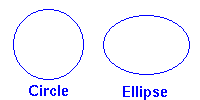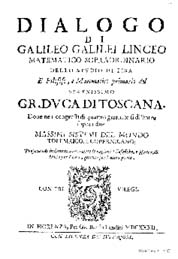Shortly before he died, Tycho hired Johannes Kepler to interpret his observations of the planets. See http://kepler.nasa.gov/johannes/
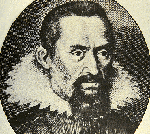 |
Tycho didn’t want to give Kepler all of his data
because he still had hopes of figuring out the planetary system himself. He gave Kepler the data on Mars because he thought Mars was the planet whose
observations would be the most difficult to interpret. Ironically, Mars’ orbit is the
one for which Tycho had good data that deviates the most from a circle and hence was most
likely to guide Kepler to the correct result. |
Key points: Philosophy that drove
Kepler's science; Kepler's three laws
After Tycho died, his relatives fought Kepler for the observations
because they wanted to gather the glory that would result from interpreting them.
Eventually, Kepler prevailed. It took genius as well as ambition to cash in on Tycho's
work - Tycho's relatives didn't have a chance!
Kepler believed in the Copernican system and sought the key to
reconciling Tycho’s observations with a heliocentric model for the solar system. Kepler was obsessed with finding a fit:
below are two pages of the hundreds he covered with calculations (From
Astronomy, by Fred Hoyle):

We sometimes underestimate "minor" advances: one of Kepler's
problems was that decimal numerical notation had not been invented, so he had to carry
fractions throughout!
What Kepler discovered:
This discovery about the shapes of planets’ orbits is now known as
Kepler also discovered two other laws :
| Kepler’s Second Law: The line joining the planet to the sun sweeps out equal areas in
equal times as it moves along its orbit. |
 |
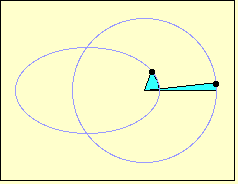 |
(From http://kepler.nasa.gov/johannes/)
An implication of Kepler’s Second Law is that a planet moves faster
when it is closer to the sun and slower when more distant.
==>Kepler’s first two laws replaced the old Aristotelian
assumptions of circular orbits and constant velocities. |
Kepler’s Third Law: The ratio of the squares of the periods for two planets is equal
to the ratio of the cubes of their semimajor axes |
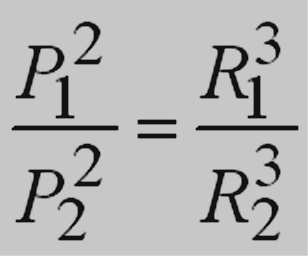 |
Sample of how this works in the solar system:
| Planet |
Semimajor
axis in A.U. |
R3
|
Period in yrs. |
P2 |
P2 /R3
|
| Mercury |
0.387 |
.0580 |
.241 |
.0581 |
1 |
| Venus |
0.723 |
.378 |
.615 |
.378 |
1 |
| Earth |
1.00 |
1.00 |
1.00 |
1.00 |
1 |
| Mars |
1.524 |
3.54 |
1.881 |
3.538 |
1 |
This law implies that planets further from the sun not only have longer
years, but they are actually moving more slowly along their orbits  .
.
 |
Here is an example (from http://www.pd.astro.it/hosted/PlanetV/planetarium/L14_03S.html).
Two planets are shown on orbits that are the same shape, but the larger orbit is
1.5874 times bigger than the smaller. Notice that the planet on the larger orbit takes
twice as long to go around the star. This is because R13/R23
= 1.58743 = 4 = 22 = P12/P22,
as required by Kepler's Third Law. |
If your computer is Java applet enabled, test your understanding of the
third law here: http://solarsystem.colorado.edu/applets/KeplersThird/extra.html
(this link also includes nice demos of the other laws)
Kepler was able to derive a geometrical description of how the planets
move that fit the existing data extremely well:
Did Tycho and Kepler "solve" the problem of the planetary
motions
Kepler did not hit upon the WHY – he was getting close with his
suggestion of some force able to act over a distance without having to actually be in
physical contact with the planets. He thought this might be something like the force
exerted by a magnet. He envisioned the sun as the source of this force.
Kepler worked during one of the most devastating wars in human history,
the "30-Years War" 
 |
He supported his family through astrology and had a number
of ideas about the planetary system that belong more to that discipline than to astronomy.
For example, he proposed that the sizes of the planetary orbits were given by the
diameters of the spheres that could be circumscribed around the regular polygons if
arranged in a certain order (From Astronomy, by Fred Hoyle). |
He proposed that the ellipticities of the planet
orbits were determined by tunes they hummed as they went around them -- the "music of
the spheres." (Illustrations from Astronomy, Fred Hoyle, and
the Cambridge Illustrated History of Astronomy by M. Hoskin)
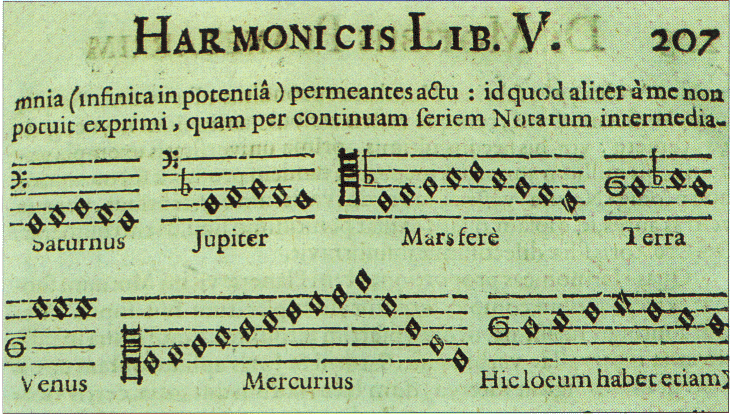
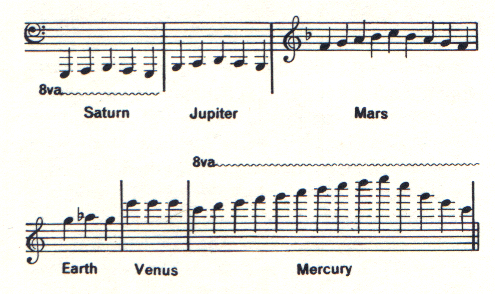
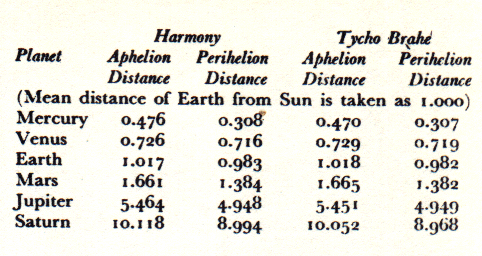 |
Although this scheme looks bizarre to modern science, it has nearly
perfect correspondence to his fits to Tycho's measurements. It is hard to imagine a
scientist not being convinced of his own brilliance with such good agreement!! |
Kepler developed a unique, sophisticated astrology
Test your understanding before going on


